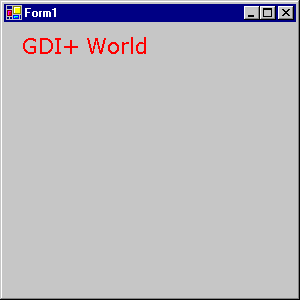Explain Gdi In Windows Programming For Dummies
Posted By admin On 05/05/18Contents • • • • • • • • • • • • This book is intended for readers. A of Windows Programming is available. Drivers Ed Test Questions And Answers Nj. () A is available. () This book aims to be a comprehensive source for any developer who is interested in programming for the Windows platform.
The app we will use is a basic Windows Forms application ( it is in fact my first ). I've included code to load and save images using GDI+, and a menu to which I will add filters. The filters are all static functions in a class called BitmapFilter, so that an image can be passed in ( C# passes complex types in by reference ) and a bool returned to indicate. This book aims to be a comprehensive source for any developer who is interested in programming for the Windows platform. It starts at the lowest level, with the Win32. Find helpful customer reviews and review ratings for Windows Game Programming For Dummies? At Amazon.com. Read honest and unbiased product reviews from our users. Using DirectX—the latest and greatest technology for making games on PCs—Windows Game Programming For Dummies will help you write. Structures, GDI.

It starts at the lowest level, with the Win32 API (C and VB Classic) and then goes over to (C++). Beyond these basic sections, it will cover COM, and the creation of ActiveX modules from a variety of languages. Next, it delves into the Windows DDK, and talk about programming device drivers for Windows platform. Finally, it moves on to the highest-level programming tasks, including shell extensions, shell scripting, and finally ASP and WSH. Other topics that will be discussed here are: Writing screen-savers, creating HTML help modules, and compiling DLL files. This book will focus on topics that are specific to Windows, and avoids general programming topics. For related material the reader is encouraged to look into Wikibooks other works, they will cover general programming, ASM, C, C++, Visual Basic and Visual Basic.NET and other languages and concepts in greater detail.
Appropriate links to these books are provided. The reader is assumed to have a previous knowledge of the programming languages involved. Specifically, prior knowledge in C, C++, and Visual Basic is required for certain sections of this book.
GDI was the tool by which the what you see is what you get (WYSIWYG) capability was provided in Windows applications. GDI+ is an enhanced C++-based version of GDI. GDI+ helps the developer to write device-independent applications by hiding the details of graphic hardware.
It also provides graphic services in a more optimized manner than earlier versions. Due to its object-oriented structure and statelessness, GDI+ provides an easy and flexible interface developers can use to interact with an application's graphical user interface (GUI). Although GDI+ is slightly slower than GDI, its rendering quality is better. The GDI+ services can be categorized into 2D vector graphics, imaging and typography. Vector graphics include drawing primitives like rectangles, lines and curves. These primitives are drawn using objects of a specific class, which has all the information required. Imaging involves displaying complex images that cannot be displayed using vector graphics and performing image operations such as stretching and skewing.
Simple text can be printed in multiple fonts, sizes and colors using typography services of GDI+. GDI+ has an internal structure that consists of about 40 extensible managed classes, 50 enumerations and six structures. GDI+ uses the concept of graphics context, which is similar to the device context used by GDI. Graphics context is represented by classes and graphics containing details of drawing in a window, but not the information about font, color, etc. By passing the required formatting information to a graphics object's methods for drawing, there is no need to maintain the state, which helps to optimize rendering performance.